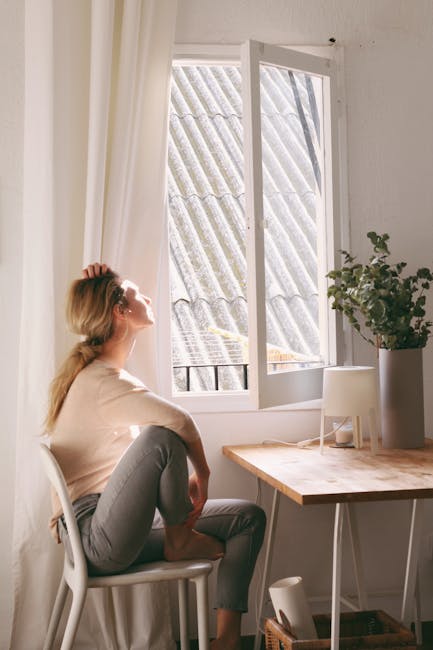Introduction
Menopause is a natural phase in a woman’s life, marking the end of her reproductive years. It’s a time of significant hormonal changes, which can lead to various symptoms like hot flashes, mood swings, and sleep disturbances. These symptoms can affect a woman’s overall well-being and quality of life. Hence, it becomes crucial to find ways to manage these symptoms effectively.
One of the most effective ways to manage menopausal symptoms is through relaxation techniques. These techniques can help reduce stress, improve mood, and promote better sleep. They can also help manage physical symptoms like hot flashes and night sweats. So, if you’re going through menopause and are looking for ways to feel better, relaxation techniques might be the answer.
There are various types of relaxation techniques that you can try. Some of the most effective ones include deep breathing exercises, meditation, yoga, and progressive muscle relaxation. Each of these techniques has its own benefits and can be practiced at your own pace. So, let’s explore these relaxation techniques in depth and see how they can help you manage your menopausal symptoms.

Photo by Asad Photo Maldives on Pexels
Deep Breathing Exercises
Deep breathing is a simple yet powerful relaxation technique that can help reduce stress and anxiety. It involves taking slow, deep breaths, which can help calm the mind and relax the body. This relaxation technique can be particularly beneficial during menopause, as it can help manage hot flashes and improve sleep quality.
To practice deep breathing, follow these steps:
- Sit comfortably in a quiet place.
- Close your eyes and take a slow, deep breath in through your nose.
- Hold your breath for a few seconds.
- Exhale slowly through your mouth.
- Repeat this process for a few minutes.
Deep breathing can be easily incorporated into your daily routine. You can practice it in the morning to start your day on a positive note, or in the evening to unwind and relax. You can also use it as a quick stress-relief tool whenever you’re feeling overwhelmed.
Meditation and Mindfulness
Meditation and mindfulness are powerful relaxation techniques that can help manage menopausal symptoms. They involve focusing your attention and eliminating the stream of jumbled thoughts that may be crowding your mind. This process can result in enhanced physical and emotional well-being.
Practicing meditation and mindfulness can have several benefits during menopause. They can help reduce stress, improve mood, and promote better sleep. They can also help manage physical symptoms like hot flashes. To get started with meditation and mindfulness, you can use resources like guided meditation apps, books, or online courses. You can also check out our meditation cushions for a comfortable meditation experience.
Like deep breathing, meditation and mindfulness can be easily incorporated into your daily routine. You can practice them in the morning to start your day with a clear mind, or in the evening to relax and unwind. You can also practice them whenever you’re feeling stressed or overwhelmed.

Photo by Tatiana Syrikova on Pexels
Yoga and Stretching
Yoga and stretching are excellent relaxation techniques for menopause relief. They involve a series of postures and stretches that promote flexibility, strength, and relaxation. They can also help manage menopausal symptoms like hot flashes, mood swings, and sleep disturbances.
Some specific yoga poses and stretches that can help manage menopausal symptoms include:
- Child’s Pose: This pose helps relax the body and calm the mind.
- Bridge Pose: This pose helps relieve stress and anxiety.
- Legs-Up-The-Wall Pose: This pose helps promote relaxation and sleep.
To incorporate yoga and stretching into your daily routine, you can start by practicing for a few minutes each day and gradually increase the duration. You can also join a yoga class or use online resources to learn new poses and stretches.
Progressive Muscle Relaxation
Progressive muscle relaxation is another effective relaxation technique for managing menopausal symptoms. It involves tensing and then relaxing each muscle group in your body, which can help reduce stress and promote relaxation.
To practice progressive muscle relaxation, follow these steps:
- Sit or lie down in a comfortable position.
- Start by tensing the muscles in your feet. Hold for a few seconds, and then relax.
- Move up to your calves, and repeat the process.
- Continue this process with each muscle group in your body, working your way up to your head.
Practicing progressive muscle relaxation can have several benefits during menopause. It can help reduce stress, improve sleep, and manage physical symptoms like hot flashes. So, make an effort to practice this relaxation technique regularly for maximum benefits.

Other Relaxation Techniques
Aside from the relaxation techniques mentioned above, there are other techniques that can help manage menopausal symptoms. These include aromatherapy, massage, and acupuncture. Each of these techniques has its own benefits and can be explored based on your personal preferences and needs.
Aromatherapy involves the use of essential oils to promote relaxation and well-being. Massage involves manipulating the body’s soft tissues to promote relaxation and relieve stress. Acupuncture involves inserting thin needles into specific points on the body to promote healing and relaxation.
To explore these relaxation techniques, you can start by doing some research or consulting with a health professional. You can also try different techniques to see what works best for you. Remember, the goal is to find a relaxation technique that you enjoy and that helps you manage your menopausal symptoms effectively.
Conclusion
Menopause is a natural phase in a woman’s life, but it can come with various symptoms that can affect your overall well-being. Thankfully, there are various relaxation techniques that can help manage these symptoms and improve your quality of life.
Whether it’s deep breathing, meditation, yoga, progressive muscle relaxation, or other techniques, the key is to find what works best for you. So, don’t be afraid to try different techniques and see what helps you feel better. Remember, your well-being is important, and it’s okay to take time for yourself to relax and unwind.
So, embrace relaxation and take care of your well-being during menopause. You deserve it! And remember, you’re not alone in this journey. There are resources and support available to help you navigate this phase of your life. So, stay positive, stay relaxed, and take care of yourself. You got this!
#MenopauseRelaxation #RelaxationTechniques #MenopauseRelief #SelfCare #Mindfulness



